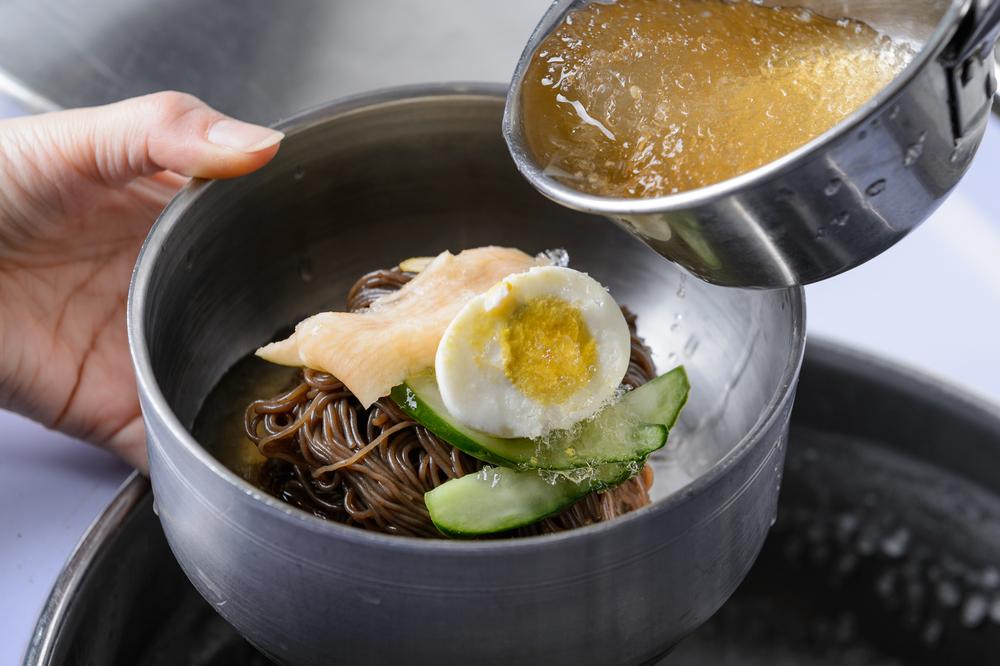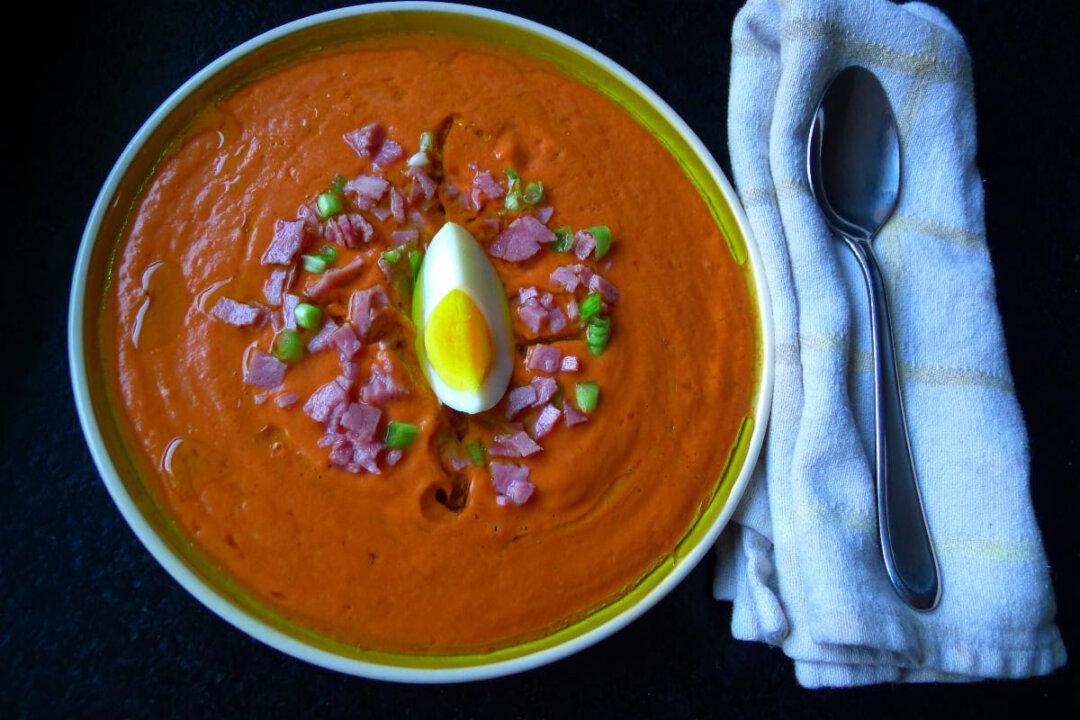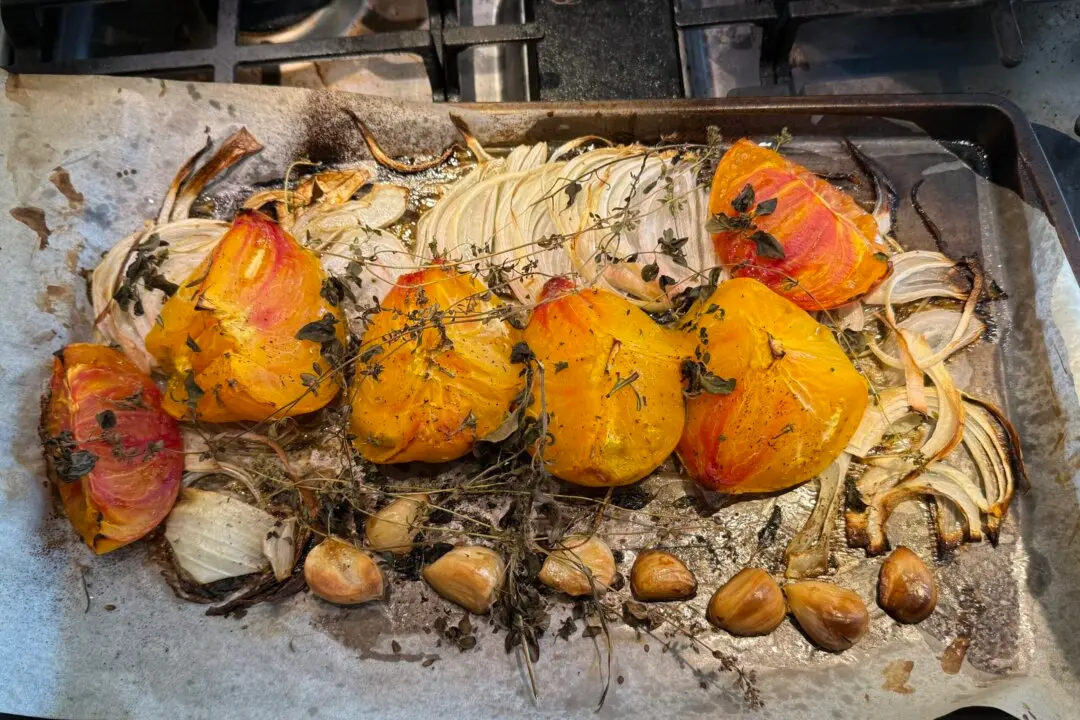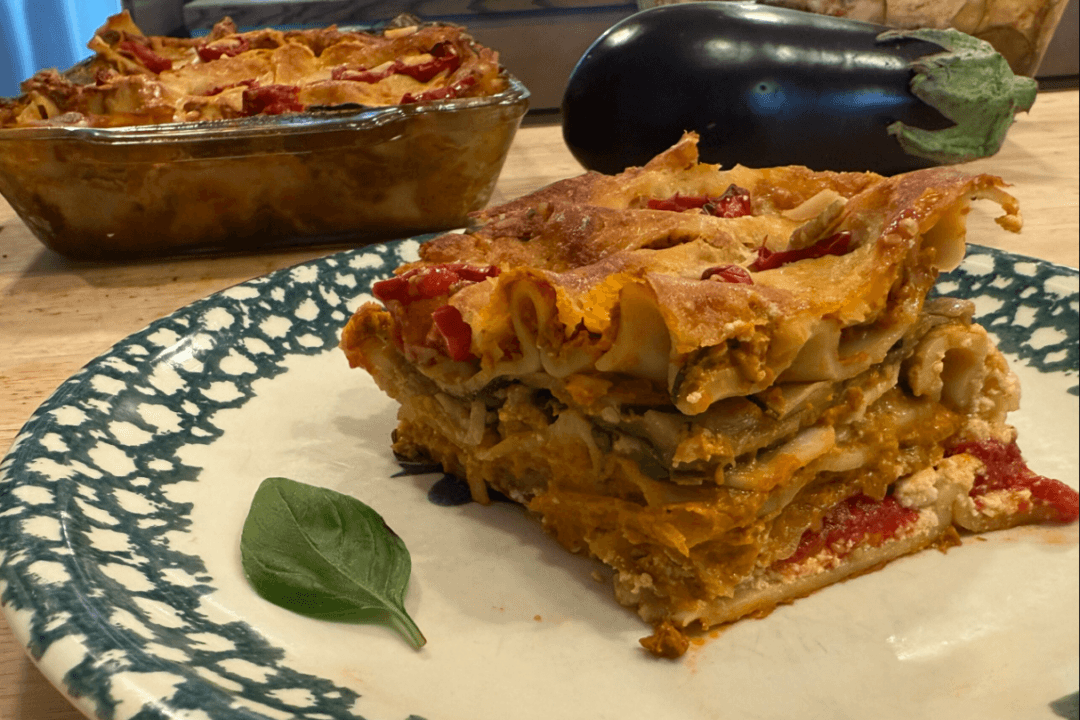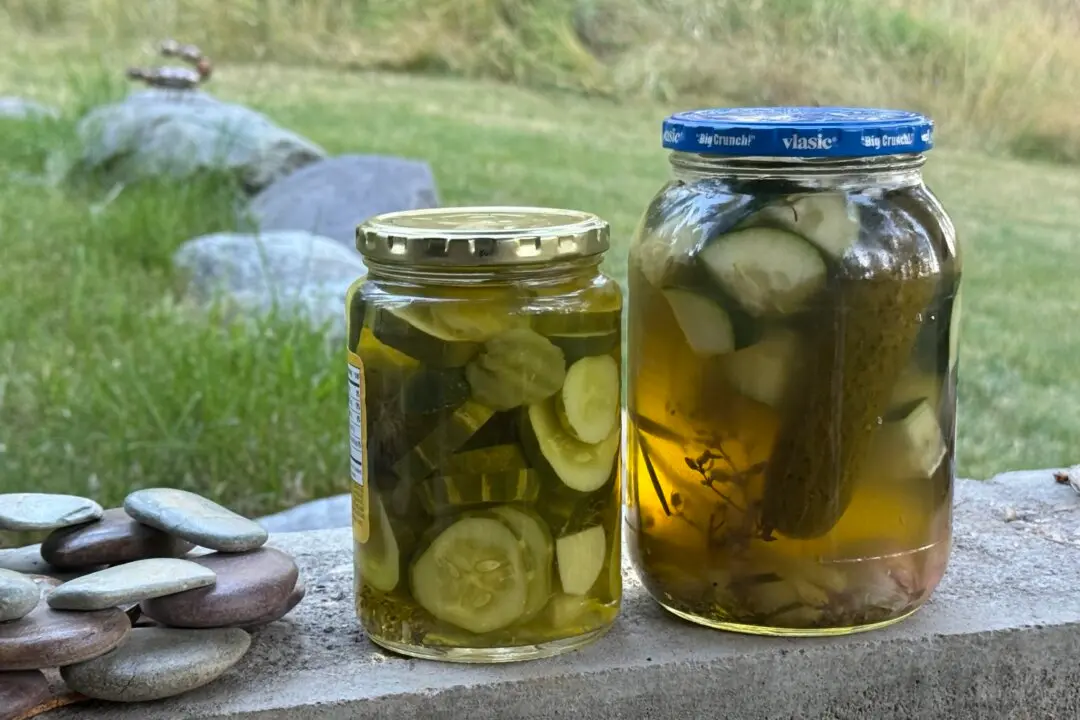Naengmyeon (n-yang-me-on) translates to “cold noodles” in Korean. This simple name renders incomplete justice to this kaleidoscopic dish.
The noodles are indeed cold, thanks to pieces of ice floating amongst them in the pre-chilled daikon radish broth. Atop the noodles are a colorful combination of proteins and plant parts, including meat, egg, blanched vegetables, pickled radish, hot peppers, and cucumbers, renowned for their coolness. Who knows what else is in that bowl? There is only one way to find out: Dig and slurp your way to the bottom of this treasure hunt of a meal.

